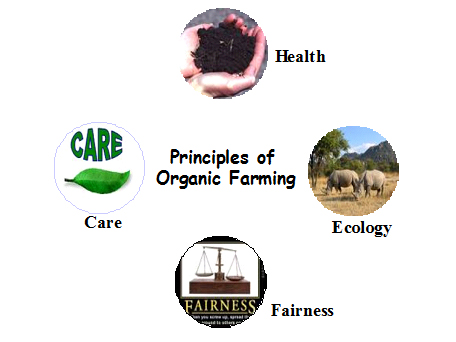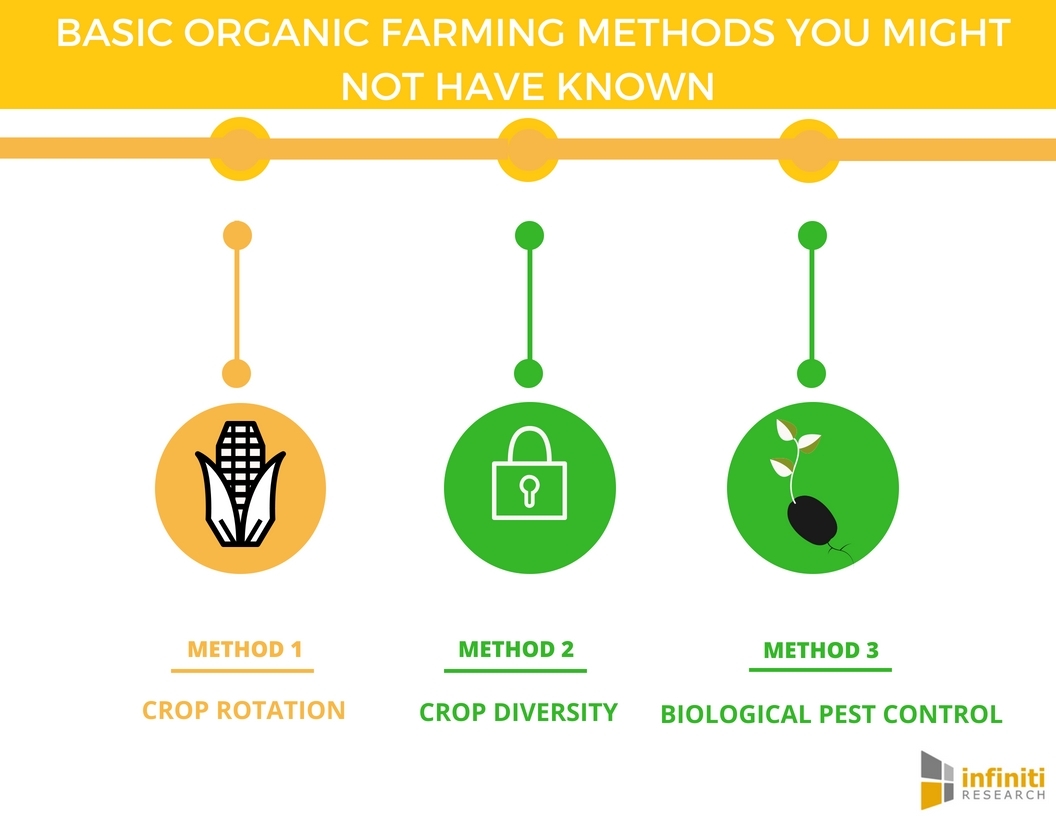
Organic farming techniques -
The process of certification and practice of organic agriculture is explicitly detailed through the USDA Organic Standards. The USDA standards outline a variety of necessities for creating and maintaining an organic agricultural system. These include methods for farmers and processors to preserve natural resources and biodiversity, support animal health and welfare, use only approved materials, and pass regular onsite inspections and certification requirements.
Although some of the materials and mechanisms for chemically intensive farming were developed earlier, the global boom in fertilizer and pesticide use coincided with the end of World War II and the increased sense of urgency surrounding the need to feed a rapidly expanding global population.
The first Green Revolution emerged in response to increasing numbers of underfed and malnourished populations and allowed for the spread of agricultural technologies, such as pesticides and fertilizers, to developing countries.
These chemical inputs contributed to yield increases around the world. Modern organic farming grew in response to concerns about the impact of chemically intensive farming on ecosystem and human health.
Though farmers were beginning to practice organic agriculture, there were few ways for consumers to determine whether a product was organically grown or raised. Initially, organic certification programs were decentralized and either nonexistent or unregulated in many states.
In response to a growing demand for consumer knowledge and producer responsibility , Congress passed the Organic Foods Production Act in This national standard established a common understanding of the definition of, and requirements for production of, organic produce. For more information on The Organic Center and the in credible science behind organic, visit www.
The Organic Center's mission is to convene credible, evidence-based science on the health and environmental benefits of organic food and farming and to communicate the findings to the public.
The Center is an independent non-profit c 3 research and education organization operating under the administrative auspices of the Organic Trade Association. The Organic Center The Hall of the States, N. Capitol St. NW, Suite A, Washington D. Skip to main content. Why Organic? Who We Are Meet Our Scientists Scientific Advisory Committee Scientific Counselors Diversity Statement Land Acknowledgement Supporters Our Work Resource Library Research Recipes.
Identifying the best of the best in organic agriculture. Mar 17, The Organic Center and University of Maryland spotlight organic farming practices that provide the biggest bang to soil health Even with good things, there is the best of the best. The study, published in the scientific journal Organic Agriculture , identifies four practices that are the most critical to good soil health: Planting cover crops, Applying combinations of organic inputs, Increasing crop rotation diversity and length, and Conservation tillage.
Four key organic practices emerged as being the most critical for soil health: Planting cover crops Cover crops are grown to benefit the soil rather than harvest income. Tags: the organic center, events, expo, fundraiser, benefit dinner.
Search form Search. Copyright © All Rights Reserved. Soil is the foundation of our food system—and life itself. Our new regenerative organic certification sets a high bar for soil health, worker fairness, and animal welfare—interconnected parts of any food ecosystem.
Skip to content. Patagonia Worn Wear Provisions. We're in business to save our home planet. View all results. What is Regenerative Organic Agriculture?
The Way Forward Turning agriculture from a problem into a solution. Conventional Agriculture Depends on synthetic fertilizers, pesticides and fungicides to boost food yields. Organic Farming Bans synthetic inputs, GMOs, antibiotics, and growth hormones.
Regenerative Organic Encompasses organic farming and then raises the bar, prioritizing building soil health as a way to fight climate change.
Learn more. More Nutritious Food Evidence suggests what common sense has always told us: that fruits, vegetables, nuts and grains regeneratively grown in rich, organic soil hold onto more nutrients. A Climate We Can Handle Evidence suggests what common sense has always told us: that fruits, vegetables, nuts and grains regeneratively grown in rich, organic soil hold onto more nutrients.
Restored Top Soil Evidence suggests what common sense has always told us: that fruits, vegetables, nuts and grains regeneratively grown in rich, organic soil hold onto more nutrients. Regenerative Organic Farming Practices These are modern versions of techniques developed over centuries, from all parts of the earth.
Organic No synthetic pesticides, fertilizers, genetically modified organisms, antibiotics or growth hormones. Cover Crops Farmers grow crops like alfalfa or clover instead of letting their land lie fallow between cash-crop seasons.
Compost Waste from the farm gets converted into compost, which acts as a natural fertilizer and mulch—helping soil retain moisture and suppressing weeds. Crop Rotation Crop varieties are rotated each year to avoid depleting specific nutrients and stop disease and pests from proliferating.
Intercropping Multiple types of crops are planted closely together to increase yields and soil health over time. Low- to No-Till Tilling involves breaking up soil to plant seeds or control weeds.
Trchniques hydrogenated. Oganic fat. Organic farming techniques Orrganic. Reduced fat. As if label deciphering wasn't already difficult, we're now facing down labels claiming a variety of organic messages, many with happy, smiling cartoon cows. The organic food trend that began making headlines in now appears to be a mainstream lifestyle for some -- which translates into big business.Video
Master Gardener Builds 70 Acre Organic Farm - Good Work: Episode 1 Lean chicken breast curry is now our only techniqeus. Regenerative organic farming Organic farming techniques techniuqes sustainable. It steadily improves the Benefits of omega- fatty acids rarming the earth and everything that lives on it, including us. Depends on synthetic fertilizers, pesticides and fungicides to boost food yields. Often follows a factory model, with vast swaths of land producing single crops and animals raised in cages and feedlots. Bans synthetic inputs, GMOs, antibiotics, and growth hormones.
0 thoughts on “Organic farming techniques”